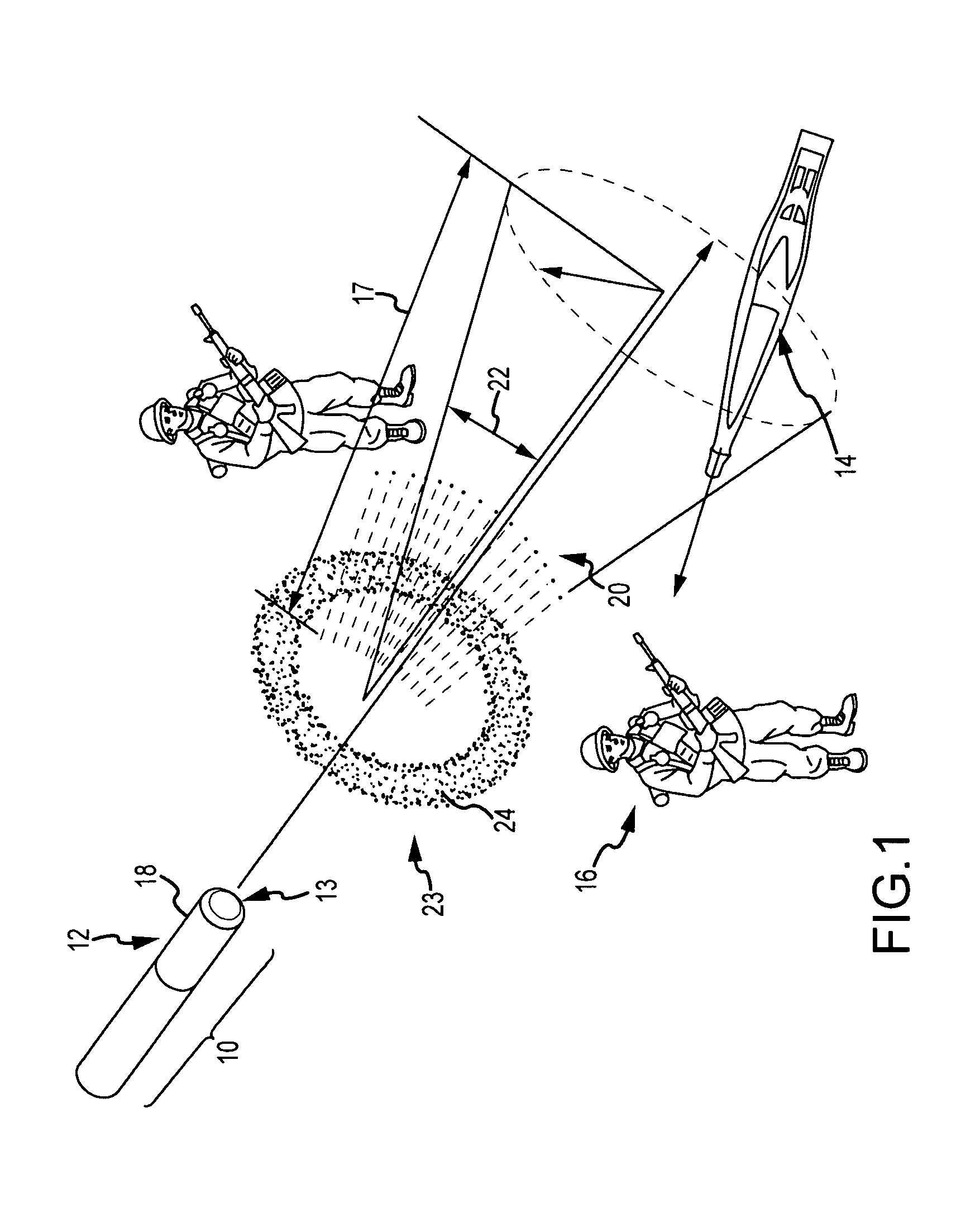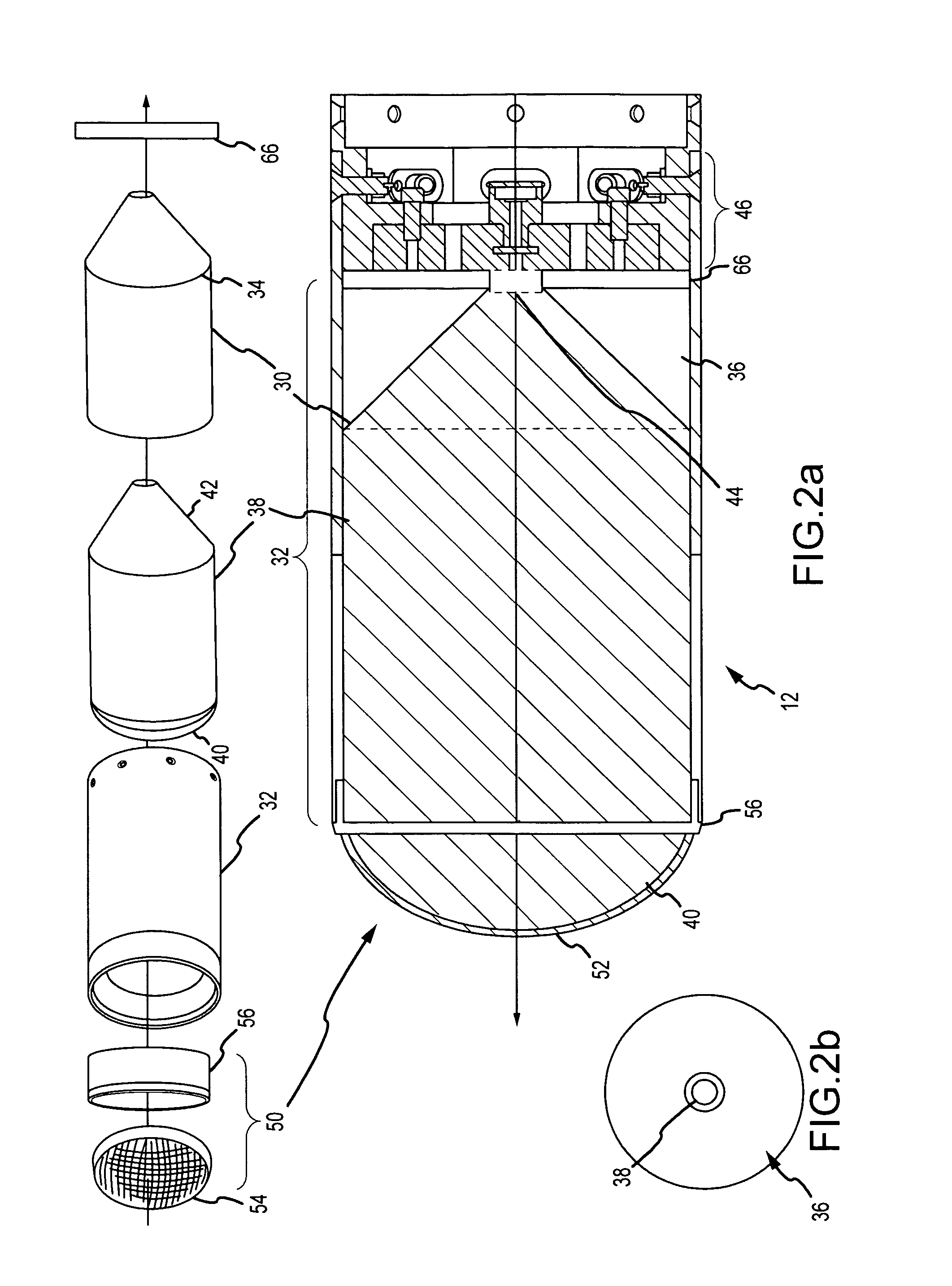Forward firing fragmentation warhead
a technology of fragmentation warheads and warheads, applied in the field of fragmentation warheads, can solve the problems of increasing the potential for collateral damage to friendly troops and the launch platform, the tolerance of aimpoint and detonation timing to engage and destroy the threat while minimizing collateral damage, and the threat is present collateral damage, so as to reduce collateral damage and the effect of reducing the threat lethal
- Summary
- Abstract
- Description
- Claims
- Application Information
AI Technical Summary
Benefits of technology
Problems solved by technology
Method used
Image
Examples
Embodiment Construction
[0019]The present invention describes a high-lethality low collateral damage forward firing fragmentation warhead. The reduction in collateral damage is accomplished by forming the case of a material that is pulverized upon detonation of the explosive. As a result, the lethality radius of the pulverized case fragments is no greater than that of the gas blast, thus reducing potential collateral damage. Warhead lethality may be improved by forming the fragmentation layer and explosive with a dome-shape that approximately matches the shape of the front of the pressure wave. This increases fragment velocity and improves the uniformity of the fragment distribution over the forward-firing pattern. A variable-thickness pattern shaper may be placed between the fragmentation layer and explosive to provide additional shaping of the forward-firing pattern. Warhead weight and cost can be reduced by eliminating explosive at the aft end of the warhead that does not contribute to the total energy ...
PUM
 Login to View More
Login to View More Abstract
Description
Claims
Application Information
 Login to View More
Login to View More - R&D
- Intellectual Property
- Life Sciences
- Materials
- Tech Scout
- Unparalleled Data Quality
- Higher Quality Content
- 60% Fewer Hallucinations
Browse by: Latest US Patents, China's latest patents, Technical Efficacy Thesaurus, Application Domain, Technology Topic, Popular Technical Reports.
© 2025 PatSnap. All rights reserved.Legal|Privacy policy|Modern Slavery Act Transparency Statement|Sitemap|About US| Contact US: help@patsnap.com



